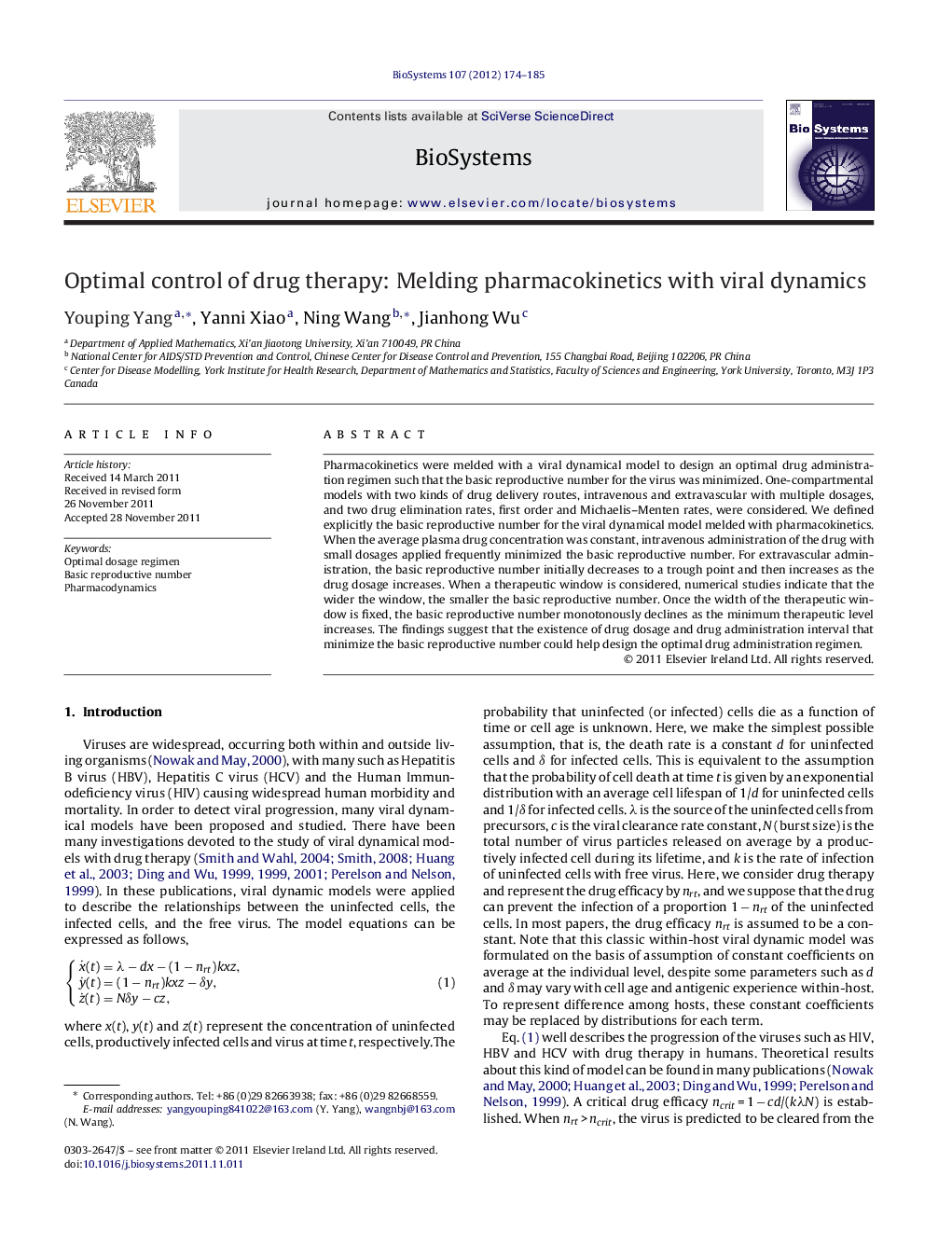| Article ID | Journal | Published Year | Pages | File Type |
|---|---|---|---|---|
| 2076196 | Biosystems | 2012 | 12 Pages |
Pharmacokinetics were melded with a viral dynamical model to design an optimal drug administration regimen such that the basic reproductive number for the virus was minimized. One-compartmental models with two kinds of drug delivery routes, intravenous and extravascular with multiple dosages, and two drug elimination rates, first order and Michaelis–Menten rates, were considered. We defined explicitly the basic reproductive number for the viral dynamical model melded with pharmacokinetics. When the average plasma drug concentration was constant, intravenous administration of the drug with small dosages applied frequently minimized the basic reproductive number. For extravascular administration, the basic reproductive number initially decreases to a trough point and then increases as the drug dosage increases. When a therapeutic window is considered, numerical studies indicate that the wider the window, the smaller the basic reproductive number. Once the width of the therapeutic window is fixed, the basic reproductive number monotonously declines as the minimum therapeutic level increases. The findings suggest that the existence of drug dosage and drug administration interval that minimize the basic reproductive number could help design the optimal drug administration regimen.
